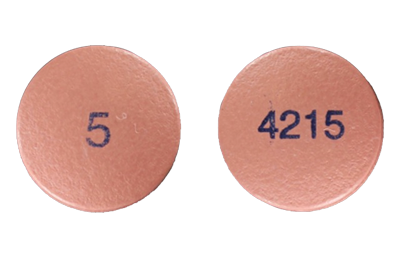
Onglyza Side Effects
Common side effects of Onglyza include headaches, diarrhea and urinary tract infections. About 58% of the side effects reported to the FDA were severe, including heart failure and pancreatitis. The active ingredients in both Onglyza and Kombiglyze XR can cause common side effects such as headaches, diarrhea and urinary tract infections.
Article Continues Below

Board-certified physicians medically review Drugwatch.com content to ensure its accuracy and quality.
Drugwatch.com partners with Physicians’ Review Network Inc. to enlist specialists. PRN is a nationally recognized leader in providing independent medical reviews.
Reviewer specialties include internal medicine, gastroenterology, oncology, orthopedic surgery and psychiatry.
Drugwatch.com has been empowering patients for more than a decade
Drugwatch.com has provided reliable, trusted information about medications, medical devices and general health since 2008. We’ve also connected thousands of people injured by drugs and medical devices with top-ranked national law firms to take action against negligent corporations.
Our team includes experienced medical writers, award-winning journalists, researchers and certified medical and legal experts. Drugwatch.com is HONCode (Health On the Net Foundation) certified. This means the high-quality information we provide comes from credible sources, such as peer-reviewed medical journals and expert interviews.
The information on Drugwatch.com has been medically and legally reviewed by more than 30 expert contributors, including doctors, pharmacists, lawyers, patient advocates and other health care professionals. Our writers are members of professional associations, including American Medical Writers Association, American Bar Association, The Alliance of Professional Health Advocates and International Society for Medical Publication Professionals.
About Drugwatch.com
- Assisting patients and their families since 2008.
- Helped more than 12,000 people find legal help.
- A+ rating from the Better Business Bureau.
- 5-star reviewed medical and legal information site.
Testimonials
"Drugwatch opened my eyes to the realities of big pharmacy. Having a family member with major depression and anxiety, I was looking for information on her medications. I found information that was very helpful, that her psychiatrist never told her."
- Black Box Warning
- Lactic acidosis (Kombiglyze XR only). This is a condition in which blood cells receive insufficient amounts of oxygen.
- Most reported side effects in clinical trials
- Upper respiratory tract infection (7.7%), urinary tract infection (6.8%) and headache (6.5%)
- Side effects reported most often to the FDA
- Congestive heart failure (748 reports)
Latest Onglyza Side Effects Information
As of June 30, 2024, 58% of Onglyza side effects reported to the U.S. Food and Drug Administration were considered severe, according to the agency. Heart failure, increased blood glucose and pancreatitis were the most common Onglyza side effects reported.
These three conditions accounted for over a quarter of all side effects reported to the FDA. Heart failure accounted for 17% of all reports.
| FDA Adverse Events Reporting System (FAERS) Data for Onglyza Side Effects | |
|---|---|
| Total cases reported | 4,398 |
| Serious Cases (including deaths) | 2,557 |
| Deaths | 331 |
Disclaimer: Reports submitted to the FDA do not necessarily indicate that the medication caused an adverse event. It is important to consult a healthcare professional before changing your medication.
Reports have been decreasing over the years, with only 11 reports so far for 2024. Despite this, patients should still talk to their doctor about potential heart and pancreatitis risks before taking Onglyza.
“Before putting a patient on saxagliptin, I want to understand their history of these conditions and other risk factors they possess for them,” Dr. Michael O. McKinney, a doctor who practices at the medical weight loss center Healthy Outlook, told Drugwatch.
“For example, patients who have had heart failure or are known to have chronic pancreatitis are usually started on different medications.”
Common Onglyza and Kombiglyze Side Effects
Respiratory tract infections, urinary tract infections and headaches were the most common saxagliptin side effects that affected 5% or more clinical trial participants.
Onglyza and Kombiglyze XR are oral medications for the treatment of Type 2 diabetes. Saxagliptin is the active ingredient in Onglyza, whereas Kombiglyze XR combines saxagliptin with metformin extended-release. Metformin is another diabetes drug.
Saxagliptin has a range of common side effects. Researchers have documented most of these effects in clinical trials and post-marketing reports.
- Bloating
- Cough
- Diarrhea
- Headache
- Nausea
- Runny nose
- Sore throat
- Stomach pain
- Upper respiratory tract infection
- Urinary tract infections
Researchers observed these side effects in 5% or more of the clinical trial participants. The data is from five clinical trials involving 882 participants, primarily white adults aged 55, who took saxagliptin for about 21 weeks.
The more serious side effects, such as heart failure, acute pancreatitis and joint pain are detailed below.
Onglyza and Heart Failure
As of June 2024, the FDA had received 748 reports of heart failure associated with Onglyza use. Its label has carried a warning about heart failure since 2016.
“When I am making prescribing decisions, I consider the advantages of glycemic control over possible harmful effects when selecting saxagliptin or other agents used to treat diabetes,” McKinney said.
A 2022 study in the Journal of the American College of Cardiology reaffirmed that saxagliptin increases the risk of hospitalization for heart failure. Another 2022 study in Biomedicines found that saxagliptin may worsen heart failure by disrupting a protective mechanism in the heart involving the protein dipeptidyl peptidase-4 (DPP4) and specific neuropeptides.
In April 2016, the FDA released a Drug Safety Communication warning about an increased risk of heart failure with saxagliptin which stated “Type 2 diabetes medicines containing saxagliptin and alogliptin may increase the risk of heart failure, particularly in patients who already have heart or kidney disease. Heart failure can result in the heart not being able to pump enough blood to meet the body’s needs. As a result, we are adding new warnings to the drug labels about this safety issue.”
“Type 2 diabetes medicines containing saxagliptin and alogliptin may increase the risk of heart failure, particularly in patients who already have heart or kidney disease... As a result, we are adding new warnings to the drug labels about this safety issue.”
The FDA found that more people taking saxagliptin or alogliptin ended up in the hospital for heart failure compared to those who took a placebo. This led to Onglyza lawsuits from individuals who allege the manufacturer failed to provide sufficient warning about the associated risks.
Case Study: Heart Failure Linked to Saxagliptin Use
Steven Vallentine, a patient with type 2 diabetes, was prescribed saxagliptin, a medication marketed as Onglyza and Kombiglyze XR. He took saxagliptin as directed by his health care provider, according to court documents.
Symptoms
While using saxagliptin, Steven began experiencing severe health issues, including heart failure, congestive heart failure and acute hypoxic respiratory failure. These conditions led to significant physical and mental suffering.
Intervention
Steven’s doctors did not initially link his symptoms to saxagliptin. However, upon further investigation and after discontinuing the medication, they considered that saxagliptin could be the cause of his heart-related issues.
Diagnosis
Steven’s healthcare team ruled out other potential causes of his heart failure. They concluded that his condition was likely a result of taking saxagliptin. This was based on the timing of his symptoms and the lack of other contributing factors.
Conclusion
Steven’s case highlights the potential risks associated with saxagliptin. Despite the known risks of heart failure linked to saxagliptin, the defendants allegedly failed to adequately communicate this to Steven or his doctors. This case underscores the need for greater awareness and caution when prescribing and using saxagliptin to prevent similar adverse effects in other patients.
Onglyza and Acute Pancreatitis
A review of three cardiovascular outcome studies showed a small risk of acute pancreatitis with DPP-4 inhibitors, such as Onglyza, as reported by Elsevier, a Dutch company that specializes in publishing scientific, technical and medical content.
Their online article from 2024 stated that the increased risk amounts to about 1 to 2 additional cases per 1,000 patients treated for two years. However, several other studies did not find this increased risk.
After examining the data, the FDA and European Medical Agencies declared that DPP-4 inhibitors do not significantly elevate the risk of pancreatitis or pancreatic cancer in patients with type 2 diabetes. Nonetheless, the agencies recommended continued monitoring to ensure safety.
Post-marketing reports have linked Onglyza usage to acute pancreatitis, prompting the drug’s label to recommend close monitoring for signs of this condition. One study found that 0.2% of Onglyza users developed acute pancreatitis, compared to 0.1% of those who received a placebo. Notably, most Onglyza users and all placebo-treated participants had pre-existing risk factors for pancreatitis.
According to a case report in Practical Diabetes, a 33-year-old man developed acute pancreatitis after switching from Onglyza to Kombiglyze XR. He had symptoms such as dizziness, vomiting, palpitations and breathlessness and was diagnosed with acute pancreatitis. After replacing Kombiglyze XR with insulin and metformin, staff discharged the patient who was now in stable condition.
“I look into their past medical history of pancreatic disease; also I inquire about gallstones and alcohol use,” McKinney said. “As a result, I enlighten individuals affected by this condition about its symptoms such as severe abdominal pain together with throwing up.”
Arthralgia: Severe, Disabling Joint Pain and Onglyza
DPP-4 inhibitors, including Onglyza, can lead to serious joint pain that might even require a hospital stay, according to Elsevier. The symptoms can appear anytime between 1 day and a few years after starting the treatment.
Doctors aren’t sure why this happens, but inflammation triggered by certain proteins in the body could be the cause.
Post-marketing studies found that patients experienced relief upon stopping the drug. Still, some had symptoms return when they restarted the same or a different DPP-4 inhibitor, according to the medication’s label.
If severe joint pain occurs after you start taking Onglyza, you should immediately talk to your doctor.
Case Study: Severe Joint Pain Linked to Saxagliptin Use
A 55-year-old woman with type 2 diabetes was taking saxagliptin, a DPP-4 inhibitor, in addition to metformin to manage her condition. She was prescribed saxagliptin at a dose of 5 mg once daily, alongside metformin at 1000 mg twice daily.
Symptoms
After two months on Onglyza, the patient began experiencing pain in both of her knee joints. The pain was significant enough to impact her daily activities, according to a case study in the International Journal of Basic & Clinic Pharmacology.
Intervention
Steven’s doctors did not initially link his symptoms to saxagliptin. However, upon further investigation and after discontinuing the medication, they considered that saxagliptin could be the cause of his heart-related issues.
Intervention and Diagnosis
The patient’s doctor stopped the saxagliptin treatment. Following the withdrawal of the drug, the patient’s knee pain gradually improved. A thorough medical evaluation ruled out other potential causes of joint pain, such as osteoarthritis, rheumatoid arthritis, gout and septic arthritis.
Conclusion
This case highlights a possible side effect of Onglyza that may not be widely recognized. It underscores the importance of monitoring joint pain in patients taking DPP-4 inhibitors and considering this side effect in their management. This information is crucial for both pharmacologists and primary care physicians, as DPP-4 inhibitors are commonly used as an alternative to glimepiride in combination with metformin for treating type 2 diabetes.
Editor Lindsay Donaldson contributed to this article.
Calling this number connects you with a Drugwatch.com representative. We will direct you to one of our trusted legal partners for a free case review.
Drugwatch.com's trusted legal partners support the organization's mission to keep people safe from dangerous drugs and medical devices. For more information, visit our partners page.


